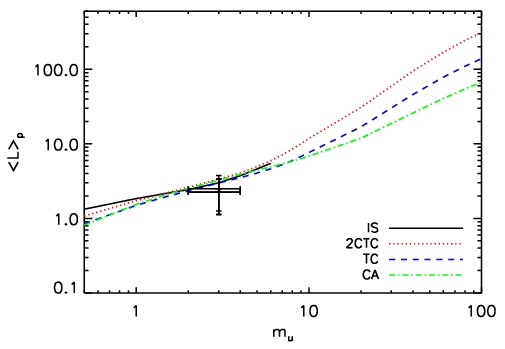| EPoS Contribution |
|
The Protostellar Mass Function: Implications for Star Formation Models and the Luminosity Problem
Stella S. R. Offner Harvard-Smithsonian Center for Astrophysics, Cambridge, MA, USA | |
|
Many models of star formation have been proposed to explain the origin of the stellar Initial Mass Function (IMF). However, the measured IMF is remarkably robust to the diverse physical properties and initial conditions of both observed molecular clouds and theoretical models. In contrast, the protostellar mass function, or the Present-Day Mass function of protostars in a region of star formation, depends on the process of star formation in addition to the IMF. In this talk, I will use the observed IMF as a basis to calculate the distribution of protostellar masses predicted by various theories of star formation. I will consider the Singular Isothermal Sphere, Turbulent Core, and Competitive Accretion models, all of which have distinct protostellar mass functions. I will also explore variations on these models: accelerating star formation and accretion rates that taper off linearly in time.
Since the masses of embedded protostars cannot be directly measured, I will use observational estimates of the protostellar lifetime, mean luminosity, and protostellar luminosity function to constrain the models. I will show that tapered accretion and accelerating star formation rates generally produce better agreement with the observations. Finally, I will discuss the implications of the PMF for the protostellar 'luminosity problem'. | |
 | |
| Caption: The mean protostellar luminosity as a function of the most massive star forming in the cloud, m_u, for accelerating star formation with acceleration time of 1 Myr. The four models are Isothermal Sphere (IS, solid), Two-Component Turbulent Core (2CTC, dots), Turbulent Core (TC, dashed), and Competitive Accretion (CA, dot-dashed). The mean observed protostellar luminosity for Class 0 and Class I sources in Perseus, Serpens, and Ophiuchus (Enoch et al. 2009) is overplotted. The vertical error bars indicate the uncertainty in the bolometric luminosity measurements, while the horizontal error bars represent the uncertainty in the mass of the highest mass star forming in the regions. | |
| Collaborators: C. F. McKee, UC Berkeley, USA |
Suggested Session:
Cores and Collapse |

